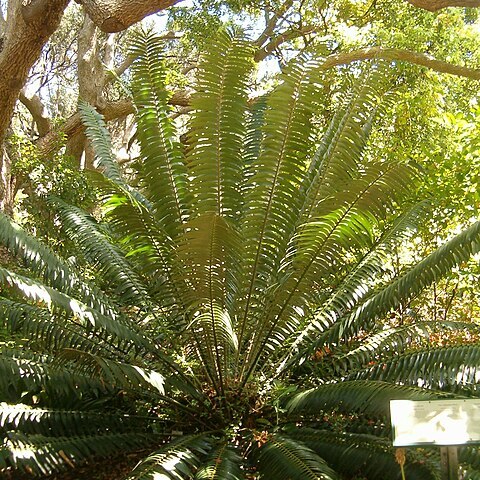Male cones 1-5 together at the apex of stems, subcylindric, slightly narrowed to base and apex, 40-50(60) cm long, 12-15 cm diam., with cylindric peduncle about 10 cm long and subtended by slender acuminate woolly bracts; median scales narrowly oblong, up to 5.5 cm long, 2.5 cm broad, nearly flat on upper surface and with micro-sporangia extending nearly to the lateral margins and base; bulla decurved with sharp lateral angles, 1.5-2 cm long, 1.2-1.5 cm thick vertically; upper facet with median ridge; lower facet more or less continuous with sporangial surface; terminal facet 1-1.2 cm broad and slightly less vertically, with minutely irregular margin; the width of the terminal facets from base to apex of cone fairly constant while the vertical measurement decreases to about half. Female cones 1-3 together at apex of stems, oblong-oval, 35-50 cm long, 20-22 cm in their greatest diam., with short stout obconic peduncle and subtended by slender acuminate woolly bracts; median scales 6.5 cm long; bulla verrucose, about 3 cm long, projecting 1.5-2 cm, 4-4.5 cm broad, 2.7-2.8 cm thick vertically, with lateral ridges extending into incurved lateral lobes about 1 cm long; upper facet rounded, indistinctly ridged; lower facet slightly convex; terminal facet concave, verrucose, 2-3 cm broad, 1-2 cm wide vertically; terminal facets becoming gradually smaller towards the apex of the cone.
Plant usually unbranched. Stems up to 6 m high. Leaves dark green, up to 2 m long. Leaflets with ± 20 regular, conspicuously raised longitudinal veins on lower surface. Median leaflets linear-lanceolate, straight or somewhat falcate, 150-250 x 20-30 mm, with or without 1-3 prickles.
A cycad.


